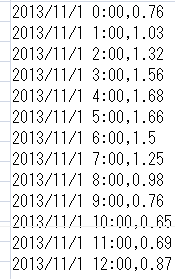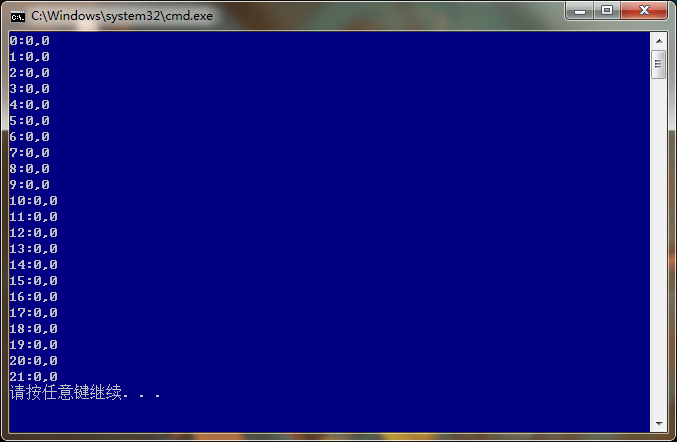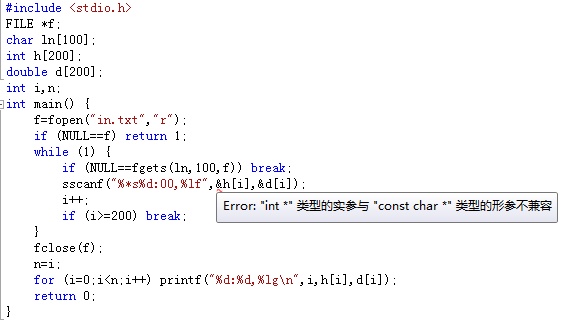65,207
社区成员
 发帖
发帖 与我相关
与我相关 我的任务
我的任务 分享
分享#include <stdio.h>
FILE *f;
char ln[100];
int h[200];
double d[200];
int i,n;
int main() {
f=fopen("in.txt","r");
if (NULL==f) return 1;
while (1) {
if (NULL==fgets(ln,100,f)) breakl
sscanf("%*s%d:00,%lf",&h[i],&d[i]);
i++;
if (i>=200) break;
}
fclose(f);
n=i;
for (i=0;i<n;i++) printf("%d:%d,%lg\n",i,h[i],d[i]);
return 0;
}
 主要用后边的时间和水位两组数据,弄成对应的(x,y),x是时间轴,y是水位轴,读出来后作为实参弄到一个函数里去计算拟合曲线
主要用后边的时间和水位两组数据,弄成对应的(x,y),x是时间轴,y是水位轴,读出来后作为实参弄到一个函数里去计算拟合曲线//in.txt:
//2013/11/1 0:00,0.76
//2013/11/1 12:00,0.87
#include <stdio.h>
FILE *f;
char ln[100];
int h[200];
double d[200];
int i,n;
int main() {
f=fopen("in.txt","r");
if (NULL==f) return 1;
while (1) {
if (NULL==fgets(ln,100,f)) break;
sscanf(ln,"%*s%d:00,%lf",&h[i],&d[i]);
i++;
if (i>=200) break;
}
fclose(f);
n=i;
for (i=0;i<n;i++) printf("%d:%d,%lg\n",i,h[i],d[i]);
return 0;
}
//0:0,0.76
//1:12,0.87
//
 你先去看看文件读写怎么做的先
你先去看看文件读写怎么做的先
